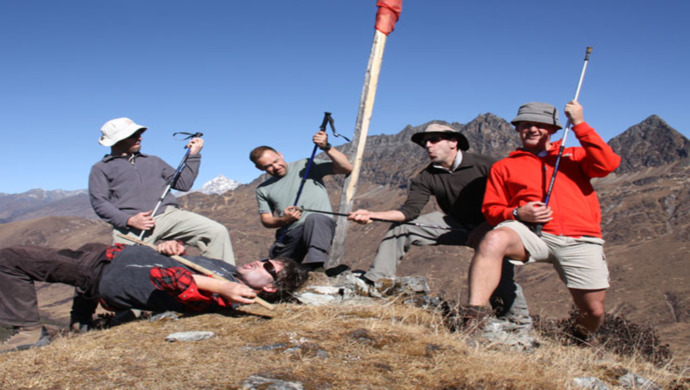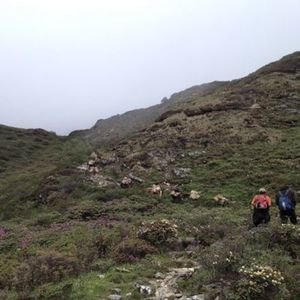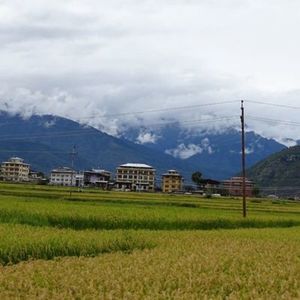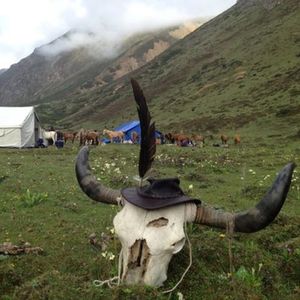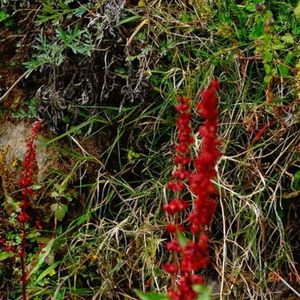Day 1. Arrive Paro:
Altitude of Paro - 2,280 m
Your flight to Paro on a clear day, is marked with the panoramic views of the Himalayas including the Everest and other famous Peaks. The approach through the foothills and the landing (including few steep turns) at the tiny airstrip of Paro has been termed as adventurous by many travelers. After the completion of immigration formalities at the Paro Airport exit door, you will be received by your Bhutanese guide with traditional “Tashi Khadar”. Thereafter you are driven to your hotel and do your check in.
In the Afternoon post lunch, visit
- Paro Rimpung Dzong, also known as Fortress of the heap of jewels, built during the time of Shabdrung Ngawang Namgyal in 1646.
- Ta Dzong, an ancient watch tower overlooking Rimpung Dzong built in 1951 now converted into national museum.
In the evening, explore the Paro Valley and town.
Meals – Breakfast, Lunch and Dinner; Overnight at the Hotel in Paro.
Day 2. Paro Sightseeing:
After breakfast, start your day with a hike to
- Taktsang Monastery (Tiger's nest), the abode of gods and monks situated at an altitude of 3100m on the Upper Paro Valley, Bhutan. As per the legend, Guru Padmasambhana (Guru Rinpoche), the tantrum mystic who brought Buddhism to Bhutan, came in the form of Dorje Droloe riding a flying tigress to subdue the demon that was obstructing the spread of Buddhism in the Himalayas.
After the completion of the hike, you would be served picnic Lunch among the woods. After lunch, visit
- Kyichu Lhakhang, one of the oldest monasteries in Bhutan built in the 7th century by the Tibetan Emperor Songtsen Gampo.
Then drive through farm road to Shana, the starting point of trek.
Meals – Breakfast, Lunch and Dinner; Overnight in Camp.
Day 3. Shana - Thangthangka: (Start of Trek):
Camp Altitude 3610 m; Distance 21 Km; Time 7 - 8 hours; Ascent 770 m; Descent 10 m
The trail follows the river through a heavily forested area with a few isolated farmhouses. It narrows and closes in and the trail winds up and down along the drainage. We pass a junction enroute, where another path leads north over the Tremo La to Tibet. Camp is in a meadow with a stone shelter.
Meals – Breakfast, Lunch and Dinner. Overnight at the Camp.
Day 4. Thangthangka - Jangothang:
Camp Altitude 4,115 m; Distance 15 Kms; Time 5 hrs - 6 hrs; Ascent 480 m
In the morning after passing a small army post, the trail slowly leaves the forest line and gradually climbs into a beautiful valley, passing Tegethang, a winter home of yak herdsmen. Lunch will be served in one of these huts. Lots of yaks will be seen today before we arrive at the Jhomolhari base camp (4,115 m). High mountains overlook the camp and visible nearby are the ruins of an old fortress used to guard Bhutan against Tibetan invasions.
Meals – Breakfast, Lunch and Dinner. Overnight at the Camp.
Day 5. Jangothang:
Day of Rest
Today you will stay at the camp site. Jangothang is a perfect environment for your acclimatization. There are good chances that one may spot some blue sheep on the upper slopes of the valley. You also have a chance to walk up to the Jhomolhari glacier or to the Tsho Phu lakes on the opposite direction.
Meals – Breakfast, Lunch and Dinner. Overnight at the Camp.
Day 6. Jangothang - Lingshi:
Altitude 4,000 m; Distance 18 Kms; Walking Time 7 hrs - 8 hrs; Ascent 810 m; Descent 1,090 m
Walk up toward the pass through a wide pastureland. Depending on the season you are there, you might find some yak herders in their camping tents along the way. As you come down after the pass to the Lingshi basin, you will see some beautiful views of the Lingshi Dzong, valley, Tserim Kang (mountain) and its descending glaciers at the north end of the valley. Camp in a stone shelter with a built-in fire pit or in the tent.
Meals – Breakfast, Lunch and Dinner. Overnight at the Camp.
Day 7. Lingshi - Shodu:
Altitude 4,100 m; Distance 22 Kms; Walking Time 9 hrs - 10 hrs; Ascent 940 m; Descent 920 m
The trail today climbs to Yalila Pass (4,820 m), from where on a clear day, impressive views of Mount Jomolhari, Tserim Kang and Masagang can be seen. The trek from the pass to the campsite at Shodu is a steep downhill.
Meals – Breakfast, Lunch and Dinner. Overnight at the Camp.
Day 8. Shodu - Barshong:
Altitude 3,600 m; Distance 16 Kms; Walking Time 6 hrs - 7 hrs; Ascent 250 m; Descent 670 m
This is the place where one comes back to the tree line. The path follows the Thimphu River, descending through rhododendron, juniper and other alpine forest. The view of the cliff facing rocks and waterfalls are stunning. Hot lunch will be served by the riverside. After lunch the trail gradually ascends to the ruins of the Barshong Dzong, finally reaching the camp.
Meals – Breakfast, Lunch and Dinner. Overnight at the Camp.
Day 9. Barshong - Dolamkencho:
Altitude 3,600 m; Distance 15 Kms; Walking Time 5 hrs - 6 hrs; Ascent 290 m; Descent 640 m
The path descends through alpine forest that gives you an opportunity to see Rhododendrons, Birch and Conifers. We once again join Thimphu river for a while. After lunch climb up to Dolamkencho camp at the altitude of 3,600 m.
Meals – Breakfast, Lunch and Dinner. Overnight at the Camp.
Day 10. Dolamkencho - Dodena - Thimphu:
End of Trek, Distance 8 Kms; Walking Time 3 hrs - 4 hrs; Ascent 500m; Descent 930 m
The path descends through bamboo forests all the way to Dolamkencho, finally joining Thimphu River again. The trail drops steeply down to the river, following it southward to the road head at Dodena. At Dodena where you will be picked up for the drive to Thimphu.
Meals – Breakfast, Lunch and Dinner. Overnight at the Hotel.
Day 11. Thimphu Sightseeing:
Altitude of Thimphu 2,350 m
Today you would be driven in and around Thimphu covering key places of interest. After breakfast you would visit
- Kuensel Phodrang, the gigantic Buddha Dordenma Statue located atop a hill in Kuensel Phodrang Nature Park.
- National Memorial Chhorten, a Stupa built in 1974 to honor the third Druk Gyalpo, Jigme Dorji Wangchuck. Every morning till night old people and young people circumambulate the Chhorten.
- Zorig Chusom, Premier institute of traditional arts and crafts in Thimphu built to preserve the “thirteen arts and crafts of Bhutan”.
- Folk Heritage, traditional house giving an insight to the Bhutanese lifestyle, and artifacts from the rural households
Thereafter you would be taken to a local restaurant for lunch. In the afternoon you would be taken to
- Sangaygang View Point, also known as BBS Tower offering panoramic view of Thimphu Town situated at an elevation of 2,685 m.
- Changangkha Monastery, popular fortress like temple perched on a ridge above Central Thimphu built in 15th Century by Lama Phajo Drugom Zhipo.
- Takin Preserve Centre, see Takin (National animal of Bhutan) It is a unique combination of Goat and an Antelope
- Tashichhodzong, or ‘the fortress of the glorious religion’. Initially erected in 1641 by Shabdrung Ngawang Namgyal, it was rebuilt in the 1960s during the reign of Bhutan’s third king in the traditional style, without plans or nails. It houses some ministries, His Majesty’s secretariat, and the central monk body and opens after 5 PM.
After the completion of sightseeing, you are driven back to your hotel. After relaxing for sometime you are served with dinner.
Meals – Breakfast, Lunch and Dinner; Overnight at the Hotel in Thimphu.
Day 12. Thimphu - Punakha/Wangdue Phodrang:
Driving Distance: 76 Kms, Driving time: 2.50 hrs - 3 hrs, Altitude of Punakha: 1310 m
After breakfast and completion of Check Out formalities you are driven to Punakha/Wangdue, for your second leg of the tour. On the way, you would stop at
- Dochula Pass, lies at an elevation of 3,150 m and is a great place to view the higher Himalayas. The landmarks around the pass includes 108 Druk Wangyal Stupas built under the patronage of Queen Ashi Dorji Wangmo Wangchuk
After arrival at Punakha, check in to the hotel. After lunch, you would visit
- Punakha Dzong, built in 1637 by Shabdrung Ngawang Namgyal. For many years until the time of the second King, it served as the seat of the Government. It is still the winter residence of Je-Khenpo (The Chief Abbot of the Central Monastic Body of Bhutan)
- Chhimi Lhakhang, a famous Temple, which is also known as “The Temple of Fertility” built by Lama Drukpa Kuenley
Evening free for leisure activities.
Meals – Breakfast, Lunch and Dinner; Overnight at the Hotel in Punakha/Wangdue.
Day 13. Wangdue Phodrang/Punakha - Paro:
Driving Distance: 135 Kms, Driving time: 4.50 hrs - 5 hrs, Altitude of Paro: 2,280 m
After breakfast, you would check out of the hotel to proceed to Paro, final leg of the tour. On the
way stop at
- Royal Botanical Park, Lamperi, also known as the Rhododendron Garden, is the first Botanical Garden of Bhutan. It is famous for 46 species of rhododendrons.
After arriving at Paro, you would be transferred to you Hotel for Check In. After lunch, you would be taken around to visit
- Paro Rimpung Dzong, also known as Fortress of the heap of jewels, built during the time of Shabdrung Ngawang Namgyal in 1646.
- Ta Dzong, an ancient watch tower overlooking Rimpung Dzong built in 1951 now converted into national museum.
Evening is free for leisure activities and shopping.
Meals – Breakfast, Lunch and Dinner; Overnight at the Hotel in Paro.
Day 14. Departure:
Today we will bid farewell to this beautiful country and take an early flight back. We hope by now you mist have made some good friends and also have taken photographs and beautiful memories of Bhutan. We certainly hope of serving you again on your next visit to this great country or the Last Shangri-La. Tashi Delek.
